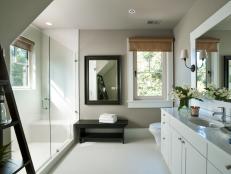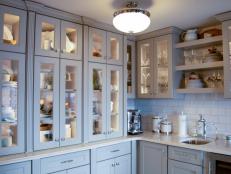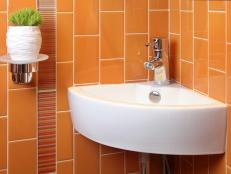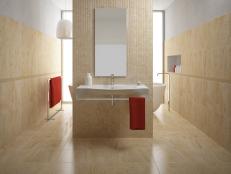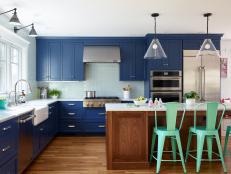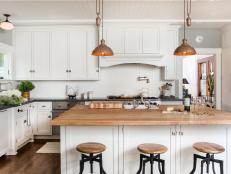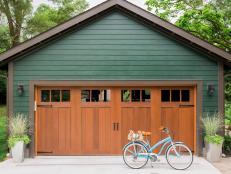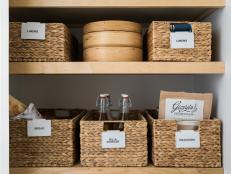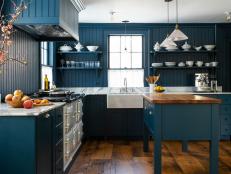Choose the Best Flooring for Your Kitchen
Tile, stone, cork, wood or vinyl? Kitchen choices fit all budgets.
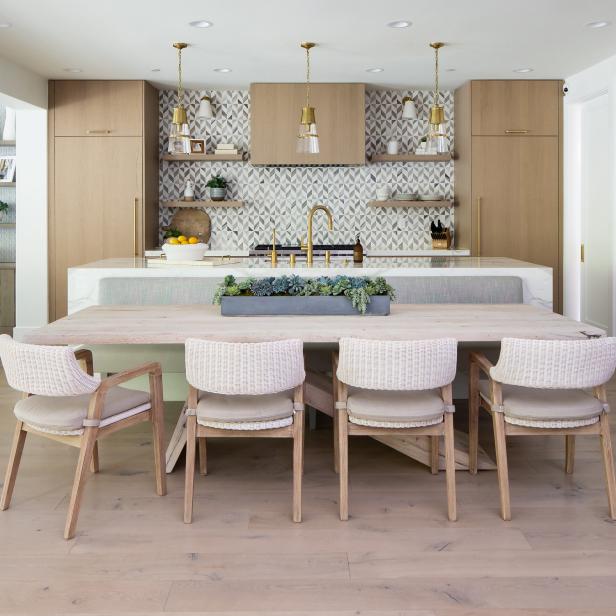
Ryan Garvin
Kitchen floors have a big job to do: they’ve got to stand up to a lot of foot traffic, shrug off spills and stains. Your kitchen floor, besides being practical and durable, is a major design statement as well. The floor you choose affects every other element of your design and with the variety of materials, colors and textures available today, your choices are nearly endless.
Some things to consider when shopping for kitchen floor tile:
Lifestyle. At home, you're the star of your own cooking show — and chances are, sauce gets spilled, silverware gets dropped, and spouses, kids, and pets check in often. It's important to choose floors that stand up to this type of wear and tear. And if you have young children or plan to stick around for years, nonslip floors are important for safety.
Your Style Sense. Choose floors that complement your kitchen, whether it's rustic and country-style or cutting-edge contemporary. Consider the kitchen's size, as well as existing colors, textures, and patterns. Should the large surface underfoot serve as a neutral backdrop or a vivid focal point?
Comfort. If you spend hours on your feet slicing, dicing, and stirring consider floors with a bit of softness and resilience. Tile floors, for instance, can be uncomfortable to stand on for long periods. Wood is better for reducing leg fatigue. And resilient floors, with their elasticity, are the most comfortable for feet. Whatever you choose, a soft mat or rug can add comfort as well.
Ease of Cleaning. Between food spills and tracked-in dirt, kitchen floors can get pretty grimy. To minimize time spent on maintenance, choose a material that's easy to clean, water resistant, and not prone to staining.
Cost. If you're planning a remodel, your budget is probably divvied among countertops, cabinetry, lighting fixtures, and more. Where does flooring fit in the plan? Once you've determined your flooring budget, measure the kitchen to get an idea of square footage. Remember that additional costs may apply, including underlayment, delivery, installation, and removal and disposal of your previous floor.
Fortunately, you’ve got a lot of choices once you determine what works best for your needs. Here are some of the best kitchen flooring ideas:
Vinyl
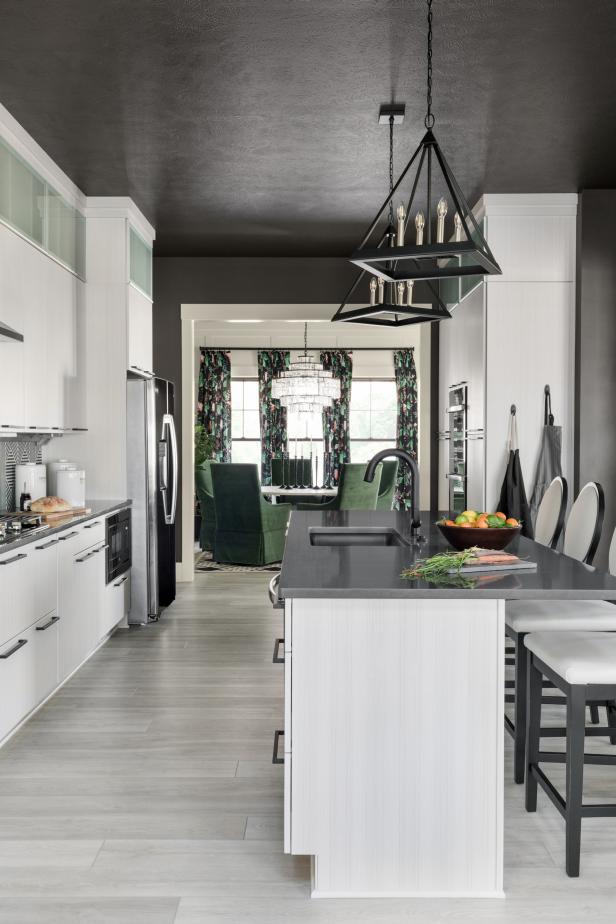
Robert Peterson, Rustic White Photography
The luxury vinyl hardwood-look flooring is 100% waterproof and features an attached cork underlayment that is naturally resistant to odor-causing mold and mildew. It was constructed to be a softer, warmer and quieter floor, which makes it a great fit for this major gathering space in the home.
Vinyl or resilient flooring offers a variety of styles and colors in either tiles or sheets for those on a budget.
Sheet vinyl flooring is waterproof and stain-proof, plus it’s a snap to clean up spills and splashes. It comes in a huge array of colors and styles, from plain Jane to embossed vinyl that does a good job mimicking ceramic tile and stone. Standard sheets are 12-feet wide so seams are minimal.
Sheet vinyl is resilient flooring, which means it feels slightly soft underfoot. That eases fatigue and makes hours of food prep easier. Also, resilient flooring is forgiving of dropped bowls and glasses. If you’re looking for cheap kitchen flooring, some types of sheet vinyl are downright inexpensive.
Porcelain Tile
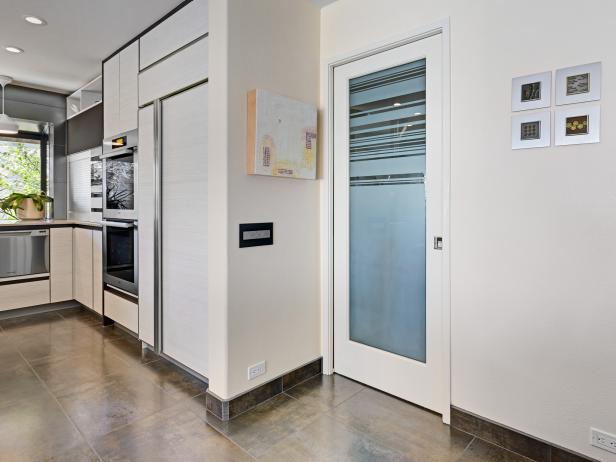
Nar Bustamante, PhotographerLink 2014 All Rights Reserved
The contrast between the slate-finished porcelain floor tiles and white frameless cabinets creates a clean look in this contemporary kitchen. The gleam of the kitchen flooring makes this space feel posh and polished.
For durability and good looks, porcelain kitchen tile flooring is the champ. It’s an upgrade version of regular ceramic tile because of a manufacturing process that makes it harder and less porous — a good choice for kitchens where spills are likely.
Porcelain tile comes either glazed or unglazed. Glazed tiles come with a glass-like coating that can be made in any color. Unglazed porcelain tiles have the naturally earthy color of the clays used to make them. Some porcelain kitchen flooring tiles are certified to be slip-resistant by the Americans with Disabilities Act (ADA).
Hardwood
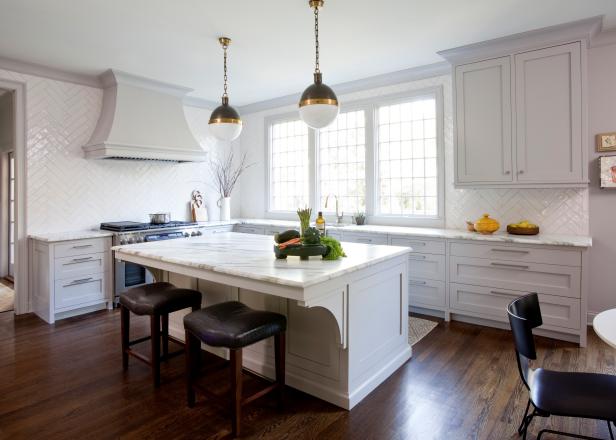
Christina Wedge
Dark hardwood flooring grounds this lovely farmhouse-inspired kitchen with a modern flair. Sleek, white cabinets provide lots of storage and marble countertops are paired with a subway tile backsplash. Two brass-trimmed pendant lights provide soft lighting above the large kitchen island with leather stool seating
Hardwood flooring combines warmth and beauty, and is comfortable underfoot. It’s a good choice if you have an open floor plan and want a single type of flooring that extends beyond your kitchen.
Hardwood combines durability with low-maintenance. Properly finished hardwood flooring resists moisture from occasional splashes, but spills should be wiped up immediately.
Hardwood flooring comes as either solid wood or engineered wood planks. Engineered wood planks have a top veneer of real wood backed by a layer of plywood that make the planks stable and the flooring less susceptible to humidity and temperature — a good kitchen flooring idea.
Cork
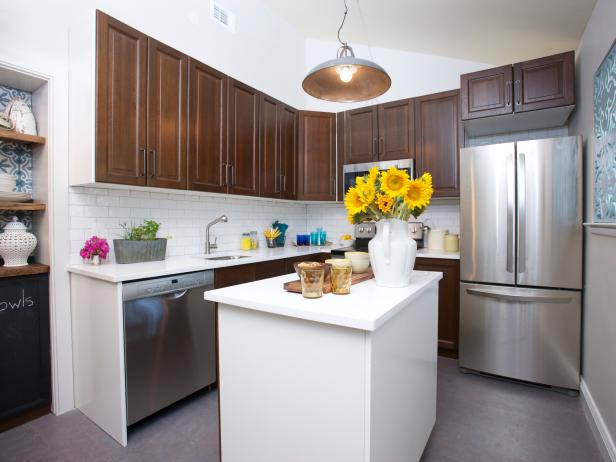
A rustic pendant light mixes with clean-lined walnut cabinets and stainless steel appliances. for a contemporary mix of styles. The white tile backsplash and gray cork flooring add layers of neutrals.
Cork is waterproof and resilient, which makes it a comfortable, moisture-resistant choice for kitchen floors. Cork comes in 12" x 12" tiles and 1' x 3' planks, each with intriguing grain patterns. Cork has a textured surface that offers some slip resistance, too.
Cork is made from tree bark that grows back, so it’s a sustainable material. It comes prefinished, but needs to be resealed every 3 to 4 years to help prevent scratches and stains.
Linoleum
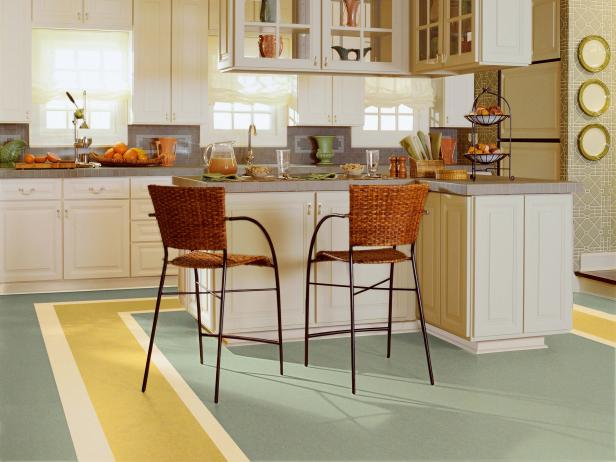
A linoleum kitchen floor design by Armstrong.
Linoleum is another green kitchen flooring option. It’s is made from renewable, biodegradable cork powder and linseed oil, and it has no harmful VOCs. It’s a resilient flooring that comes in many patterns and colors, and it stands up well to foot traffic.
It’s moisture-resistant but a bit susceptible to staining, so make sure the product you buy has a protective coating to guard against scratches and spills.
Limestone
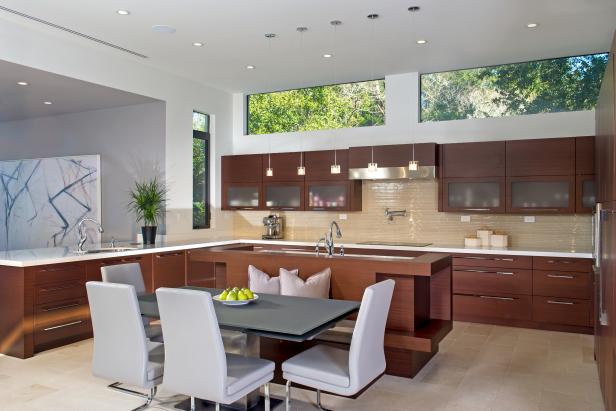
benita goldblatt
The walnut cabinetry adds warmth to the soft limestone flooring in this contemporary kitchen, while natural light is maximized by the clerestory windows above. The highlight of the space is a custom island, designed to accommodate bench seating for the breakfast table.
Limestone is a natural stone that offers an Old World look. It's a porous material that must be sealed upon installation and then twice a year.










